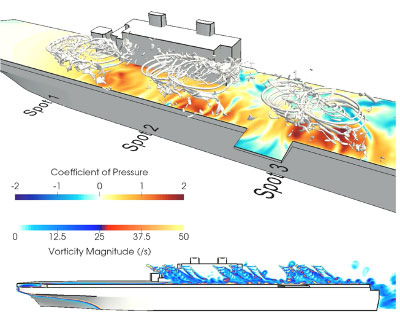We have longstanding collaborations with defence in developing and translating state of the art computational engineering approaches into practise, spanning the full range from computational fluid dynamics through to computational material science and finite element analysis, all integrated with advanced optimisation methods. Specific strengths include:
- Computational Aerodynamics: Design and delivery into application of fast and highly accurate tools
- High Speed Combustion: world-leading computational modelling tools for Rotating Detonation Engines.
- Computational Aeroelasticity : Transonic buffet, non-linear aeroelastic response, fluid-structure interactions
- Topology Optimisation: Evolutionary Structural optimisation with multiple static and dynamic objectives
- Design Optimisation: state-of-the art design and optimisation tools for bespoke on-demand platforms
Defence projects in this area leverage fundamental advanced made through substantial investment over several decades by the ARC.As a specific example, our recent research in computational algorithms and models has substantially advanced Defence capability to compute the performance of helicopters operating around ships and within urban canyons, including multiple helicopter operations. Our projects have delivered a fifty-times increase in computational speed and a new capability to compute interactions of multiple rotorcraft in simultaneous landing or take-off manoeuvres or formation flight. This tool has been translated into operational use within DSTG.Our Defence portfolio consists of several DST/DSTG projects focussed on helicopter operations, aeroelasticity, topology optimisation and underwater vehicle optimisation, two large CRC-Ps on propulsion systems for responsive access to space and eVTOL aircraft optimisation, a DIN funded seed project on design optimisation of drones, and a DIN pilot project on cargo delivery eVTOL aircraft.
